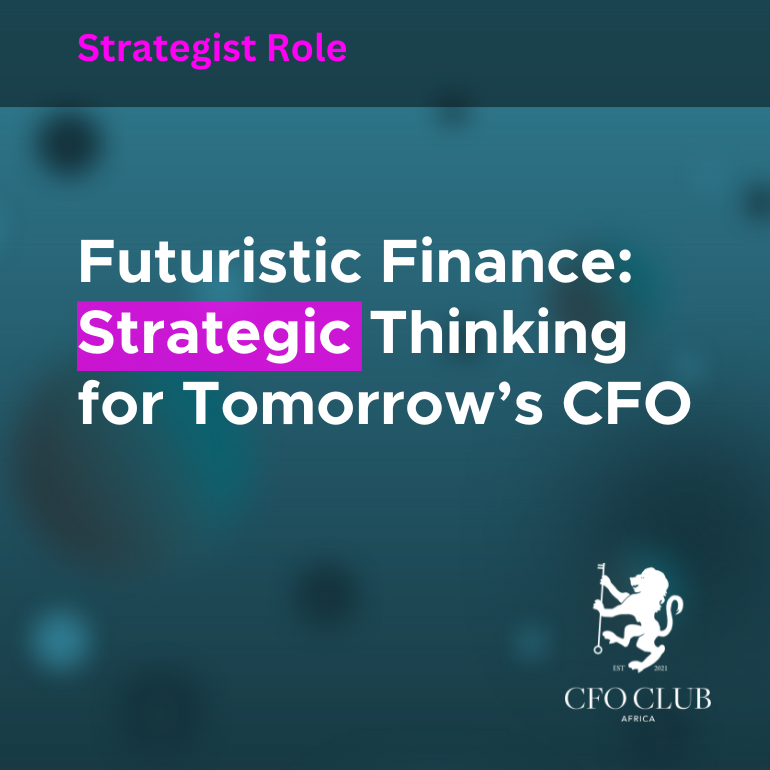Futuristic Finance: Strategic Thinking for Tomorrow’s CFO
In an era where rapid technological advancements and global economic shifts are the norm, Chief Financial Officers (CFOs) are not just financial stewards but strategic visionaries. The role of the CFO has evolved significantly; from managing budgets and forecasts, they are now pivotal in shaping their companies’ futures through strategic thinking and decision-making. This article explores how CFOs can harness futuristic finance strategies to drive their organizations forward, ensuring adaptability and growth in an unpredictable business environment.
Embracing Technological Innovation
The first step towards futuristic finance involves embracing technology—not just as a tool, but as a central pillar of financial strategy. Digital transformation, artificial intelligence (AI), blockchain, and big data are not just buzzwords but critical assets in the financial toolkit of tomorrow’s CFO.
Practical Steps:
- Invest in AI and Machine Learning: Utilize AI to automate routine tasks such as data entry, payroll processing, and even some aspects of compliance and risk management. This frees up time for the finance team to focus on more strategic tasks.
- Leverage Big Data Analytics: Implement systems that can analyze large sets of data to uncover patterns, predict trends, and provide actionable insights. This capability is crucial for accurate forecasting and strategic decision-making.
Example:
A multinational corporation recently integrated AI to streamline their financial reporting process. The AI system was trained to extract relevant financial data from various departments, standardize it according to the company’s reporting format, and develop preliminary financial reports. This reduced the financial team’s workload by 40% and increased reporting accuracy by 30%, allowing the CFO and their team to spend more time on analysis and strategic activities.
Developing a Strategic Mindset
Tomorrow’s CFO must think like a strategist. This means beyond the numbers; they must consider the broader business context, including market trends, competitor behavior, and regulatory changes.
Practical Steps:
- Scenario Planning: Regularly engage in scenario planning exercises to anticipate possible future situations. This helps in preparing the organization for unexpected changes in the market.
- Continuous Learning: Stay updated with not just financial trends but also global economic, technological, and political trends that could impact the business.
Example:
The CFO of a tech startup spearheaded an initiative to diversify the company’s investment portfolio in anticipation of potential market volatility. By analyzing trends and using scenario planning, the CFO identified that investing in renewable energy and biotechnology sectors could hedge against their traditional investments in technology. This strategic decision not only spread the risks but also opened up new avenues for growth.
Building Cross-Functional Collaboration
Strategic thinking doesn’t happen in a silo. Tomorrow’s CFO must cultivate a collaborative environment where finance functions align with other departments such as IT, marketing, and operations.
Practical Steps:
- Cross-Functional Teams: Establish cross-functional teams to work on specific projects. This encourages knowledge sharing and a holistic approach to problem-solving.
- Regular Strategy Meetings: Conduct regular meetings with other department heads to ensure alignment of departmental strategies with the overall business strategy.
Example:
A leading retail company’s CFO initiated monthly cross-functional meetings involving leaders from finance, marketing, operations, and IT to discuss ongoing projects and align them with the company’s financial goals. This initiative led to a more integrated approach to budget management and strategy implementation, resulting in a 15% increase in operational efficiency.
Fostering Innovation and Agility
The ability to innovate and adapt quickly is crucial for any organization looking to thrive in the future. CFOs play a key role in fostering an environment that encourages innovation and rapid response to change.
Practical Steps:
- Innovation Fund: Set aside a portion of the budget to fund innovative projects within the organization. This shows a commitment to innovation and encourages team members to bring forward new ideas.
- Agile Project Management: Adopt agile methodologies in financial planning and project management to allow for flexibility and quicker adjustments in strategy.
Example:
A pharmaceutical company’s CFO championed the creation of an innovation fund that employees could apply to for pilot projects. One such project involved the development of a new drug delivery system using nanotechnology, which turned out to be a breakthrough in administering medications for chronic diseases.
Conclusion
For CFOs, strategic thinking is not just about financial foresight but about positioning the organization for sustainable growth and resilience in an uncertain future. By embracing technological innovations, developing strategic mindsets, fostering cross-functional collaboration, and encouraging agility, CFOs can transform their roles and drive their businesses towards a successful future. These practical steps and examples provide a roadmap for today’s CFOs to evolve into strategic visionaries of tomorrow.

